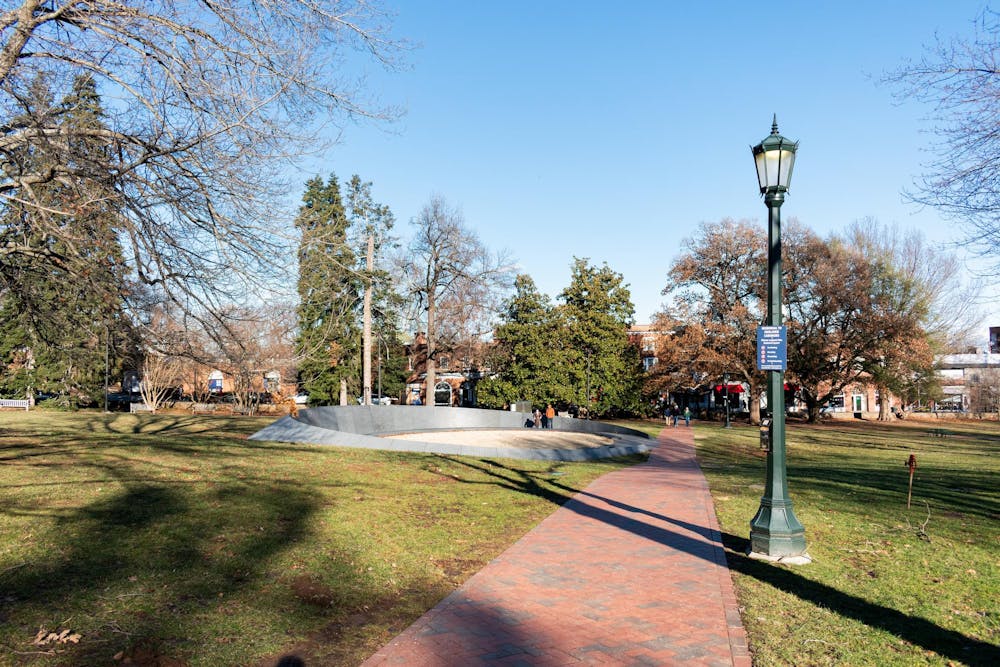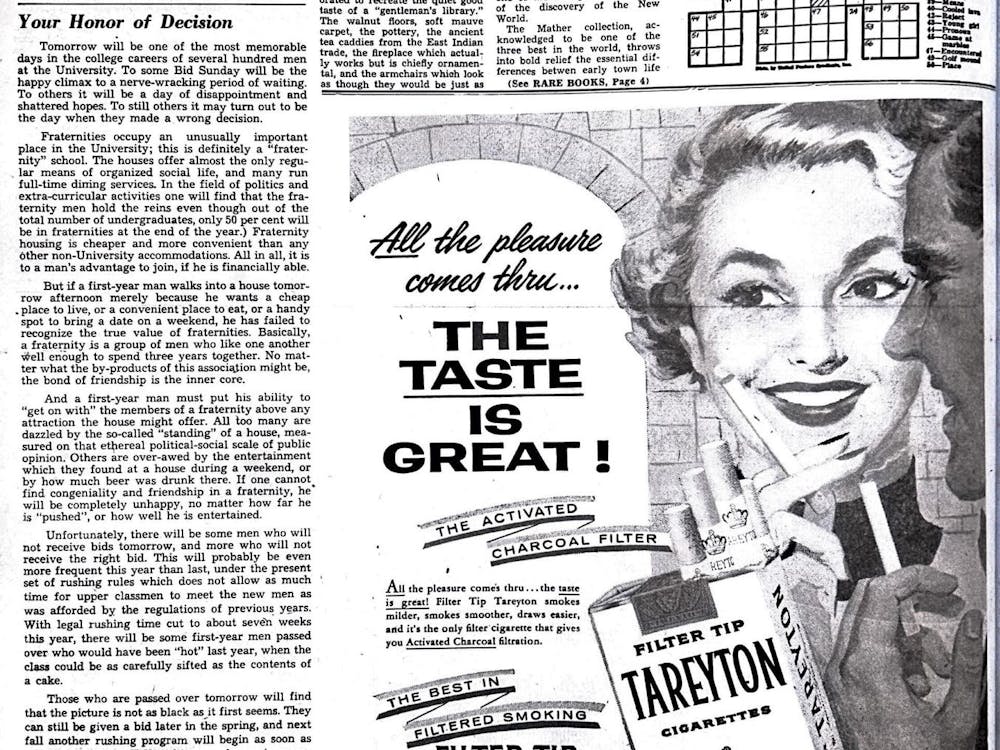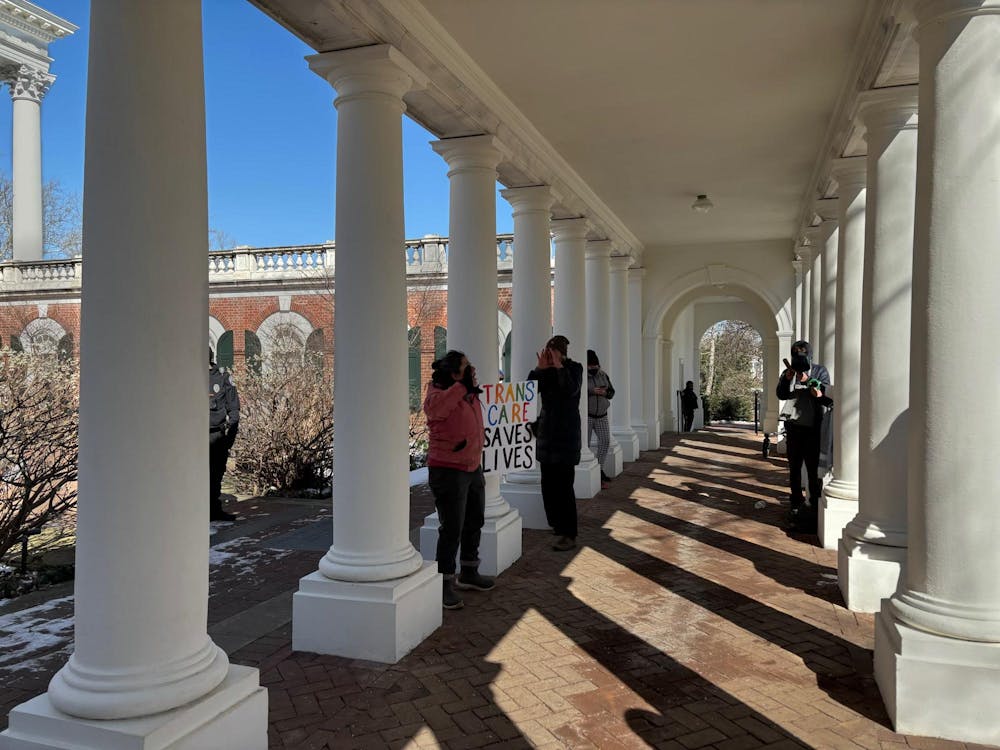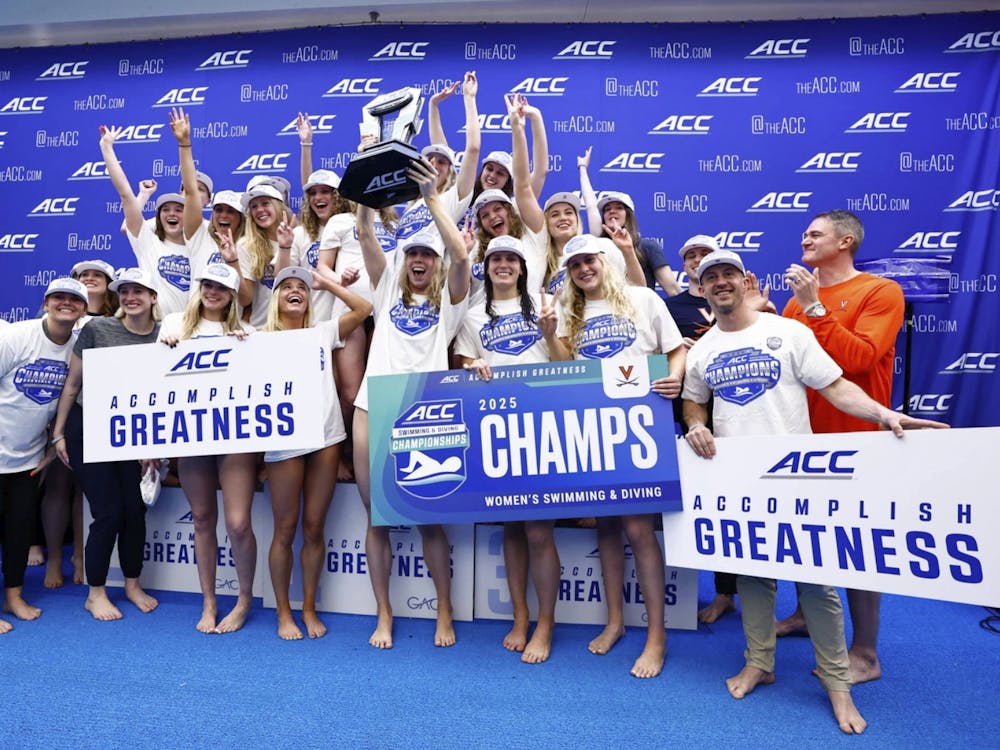Black History Month is an important time for the community to reflect upon the University’s enduring legacy of enslaved labor and remember the many enslaved Black Americans who built and maintained Grounds from 1817 until the end of the Civil War in 1865. After the Civil War, many freed Black people continued to work on Grounds, and in the 20th century, Black students were finally allowed to enroll.
In 2013, University President Teresa A. Sullivan established the President’s Commission on Slavery and the University to explore the University’s historical relationship with slavery and advise the President on how to best commemorate the many enslaved laborers and Black leaders who are often an unacknowledged but deeply significant part of the University’s history.
After a long-standing history of racial oppression, the University honors the lives of Black individuals in Charlottesville through various on-Grounds memorials for enslaved laborers, prominent Black leaders and their descendants. Documented below are a few of the many memorials and historical structures that preserve the legacy of Black leaders and the history of enslaved laborers.
Memorial to Enslaved Laborers
The University officially opened the Memorial to Enslaved Laborers April 11, 2020 as part of the Commission’s mission to honor the life, labor and sacrifice of those who were enslaved at the University.
Nearly 4,000 Black men, women and children built, labored and lived at the University from 1817 to 1865. The University does not have a record of many of the enslaved laborers on Grounds and is therefore still working to identify them while also tracking down living relatives of enslaved people, according to Brendon Wolfe, former Editor of the Encyclopedia of Virginia.
“[The University is] doing a kind of reverse genealogy where they are researching the descendants of these people in order to identify living people who are related to Black enslaved laborers at the University,” Wolfe said. “The point of doing that is to build a community of descendants.”
The Memorial to Enslaved Laborers is a circular stone structure with running water and a timeline of the history of slavery at the University in the inner circle. The outer wall of this memorial is inscribed with thousands of “memory marks” — a series of long dashes representing the laborers whose stories are unknown. These marks are set alongside a series of names, relationships and occupations of the Black laborers for whom the University has a record.

According to Assoc. Anthropology Prof. Gertrude Fraser, this memorial was inspired by the Vietnam Memorial in Washington, D.C. and aspires to give visitors a sense of the many Black lives lived and lost at the University. Fraser said that the memorial provides an immersive location to learn about, revere and reflect upon the many people whose lives were dedicated to building the grounds where the memorial stands.
“[Seeing this memorial] you can begin to imagine what it might have been like for them as whole people whose lives may not have been strictly shaped by slavery and by enslavement,” Fraser said. “They loved, they cared for people … so using [their] names was a way of marking people materially, as opposed to pointing to [their] enslavement.”
Henry Martin plaque at the University Chapel
Today, Henry Martin is one of the most widely-known Black individuals associated with the early history of the University. Martin was born into slavery in 1826 — once freed, he worked as a Rotunda bell-ringer at the University every day from 1847 until his retirement in 1909. Students could hear Martin ring the Rotunda bells hourly, waking the students at dawn and marking the beginning and endings of class each day.

Wolfe uncovered the story of Henry Martin while documenting the Civil War and writing a section on both slavery in Virginia and the history of the University. Wolfe noted that Martin remained a servant to white people at the University even after gaining his freedom, and highlighted that had Martin tried to challenge conventional racial stereotypes, he may have been treated more negatively by the University.
“His position at U.Va. was never one of total freedom,” Wolfe said. “...Martin was put in this box by the white people around him as a faithful servant, and he had to play that role in order to survive. If he had chosen to buck that convention, if he'd chosen to assert himself in ways that were not approved by the white power structure, then he might have turned into another John Henry James, someone who was lynched just outside of Charlottesville in 1898.”
After a fire extensively damaged the Dome Room of the Rotunda in 1895, the bell was relocated to the University chapel where Martin continued his daily ringing of the bells. According to Chapel Renovations Project Manager James Zhemer, last year on Liberation and Freedom Day, Henry Martin’s grandson, Richard Hunt, ceremoniously rang the bell to commemorate Martin’s time at the University.

A plaque now honors Martin’s 62 years of service near the entrance of the University Chapel.
The Kitty Foster Memorial
The Foster site is a memorial dedicated to the freed Black woman, University worker and property owner, Kitty Foster. In 1833, Foster bought roughly two acres of land just south of the University from a white merchant. As a freed woman, Foster worked for the University washing clothes for students and faculty. She did all of this on her own property because the presence of free Black individuals was generally discouraged on Grounds.

When Foster died in 1863, she was buried in a cemetery on her property. Later in 1993 archeologists discovered this cemetery, and in 2011 the University dedicated a memorial to Foster’s years of service on this site. The Foster site also serves as a reminder of the commercial relationship between free Black Americans and the University community before, during and after the Civil War.
This memorial is only a small piece of the original homestead, but still serves as a family and neighborhood cemetery and also includes some of the original cobblestone of Foster’s house as well as a “"shadow catcher" that outlines the shape of the original home.
Residence Hall and Academic Buildings
One of the recommendations of the Commission was to to name at least one building after enslaved people who were connected to the University. In 2015, the residence hall Gibbons House was named after William and Isabella Gibbons, an enslaved couple that worked for two different University professors in the mid-nineteenth century.
The couple managed to build a family while also learning to read and write during their enslavement. Once emancipated, Isabella became a teacher at the Freedman’s School — now known as the Jefferson School — and William became a minister and educator at First Church, the oldest Black church in Charlottesville.
Gibbons House is not the only University building named after a prominent Black leader — the School of Medicine research center was renamed Pinn Hall in 2016 to honor the legacy of Vivian Pinn, an alumna of the School of Medicine who became the first Black woman to chair an academic pathology department in the United States. The center was originally named after Harvey Jordan, former University professor and eugenicist.
The School of Education Ridley Hall was also renamed from Ruffner Hall in 2013 — originally dedicated to William H. Ruffner, superintendent of Virginia public schools and a proponent of recolonization. Walter Ridley was the first African American to earn a doctoral degree from the University.
Fraser, who now teaches in Ridley Hall, said that she was at first skeptical of the University’s efforts to recognize and make amends for a history based on enslavement — questioning if it was “too little, too late.” However, Fraser said that she is now grateful for the investments and efforts made by the University to remember Black history during a time when this type of social progress is often perceived as threatening.
“Now, understanding how quickly the world can change and where these commitments to recognizing the past are [sometimes] seen as almost criminal,” Fraser said. “I think the renaming of buildings is a deliberate and important action on the part of the University to recognize the commitments and investments in the University that African Americans have made.”
The Lawn
The Lawn and academical village served as the center of the University when originally constructed in 1817, making this UNESCO World Heritage Site an unofficial memorial to the complicated history of the University.
While University professors and deans were given the honor of living in the academical village overlooking central Grounds, several enslaved people were lodged in the basement beneath Lawn Rooms 34 to 36. Behind every pavilion on the Lawn, there are hidden gardens surrounded by brick walls designed to hide the enslaved laborers working within.
The hotels in the East and West range were a place where not only many students stayed, but also a place where enslaved people cooked, cleaned and did laundry. The enslaved laborers who worked in the hotel made up nearly half the slave population from 1830 to 1860.
Much of the old Jeffersonian architecture was built pre-Civil War and thus serves as an unofficial symbol of remembrance of the long-standing history of the 200 year-old Grounds, allowing visitors to reflect on the enduring legacy of the many laborers who constructed these grounds.
The legacy of enslaved laborers working and living in the Academical Village is highlighted in this information brochure which was designed by students in 2013 to provide visitors with information about the many historical on-Grounds locations.
Honoring Black history at the University
According to Fraser, learning about Black history and its enduring legacy should not be confined to February. Nevertheless, Black History Month does create intentional opportunities to reflect on Black history.
“It creates a moment, just like you and I are talking now,” Fraser said. “[It creates] a community [that] can engage with the ideas and the new information about African American contributions, and thank the ancestors — all of us are so deeply obligated to them for our present.”
Fraser also noted her surprise that topics focused on Black history are not taught at schools, but that Black History Month provides an opportunity to learn more about these historical events and figures.
“Black History Month can bring to light the everyday ways in which these people's lives and their sacrifices continue to be meaningful for us.”






